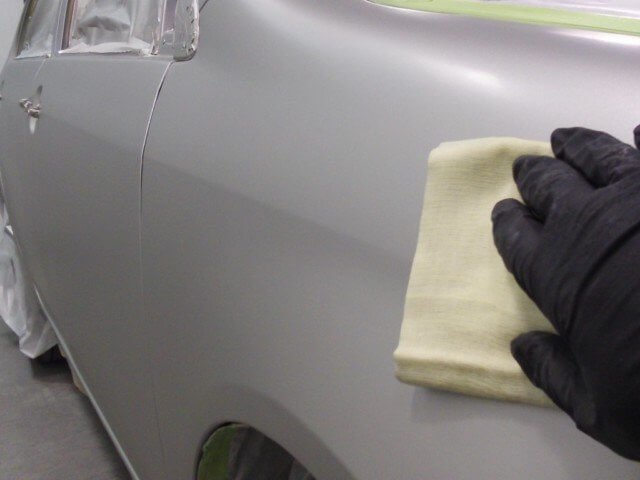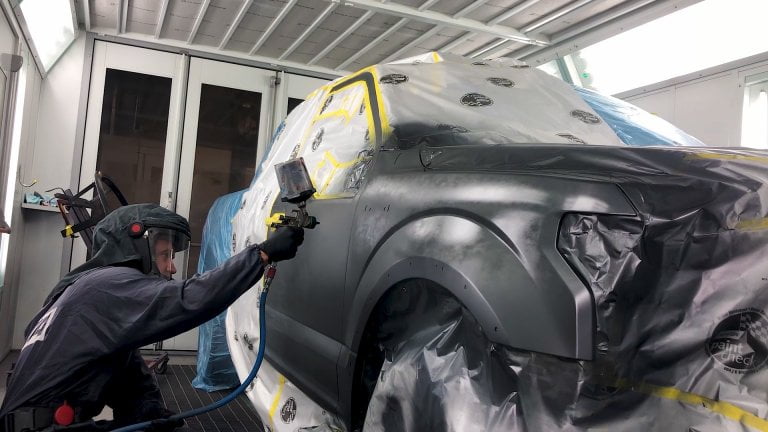How to Spray a Clean Paint Job
How to Keep Dirt out of the Paint |
Spraying a clean paint job is a common goal painters in all industries shoot for. Many painters, especially new painters can fall short of this, get frustrated and have no idea what is causing the problem there having. While dirt can be easily extracted by polishing afterwards it can create unnecessary work and cost time and money for the shop or flat rate painter. You should look to develop a solid system and routine prior to spraying any job, regardless of what. Here are a few tips to help you develop a good routine:
Pre-wash The Entire Vehicle
Before the vehicle enters your shop, especially the paint department ensure it is washed off well. Blast out wheel wells, jambs, tires and any other crevasse that dirt can hang onto. This will also save your prep the step of washing the panel and give the repair team a clean panel to inspect, preventing missed damage later on.
Masking Techniques
First off, if you’ve created a flurry of sanding dust from either body filler or primer blow it down and wash out the panels again before masking. Mask off any holes on the panels from the inside (door handle, molding, antenna holes..etc) to prevent stirring up anything inside the panel that may exit during clearing. Mask your jambs tight, use a good size of paper not just to prevent overspray but to minimize air flow inside the door jambs. Keep your paper tight, don’t create any pockets for dirt and if you see a fold tape it down.
Booth Housekeeping
This is a very obvious answer but so often ignored. Wash out the walls and floor at least once a week, sweep the booth out a few times a day (depending on use). Another tactic used by some is wetting the floor down. It is not really necessary if your booth is being well maintained.
Take A Few Minutes Before Spraying To Blow Off The Panels
Too often we get into the habit of rushing and skipping this important step. No matter what the day brings the boss man will tell you all have to go yesterday. Don’t rush because of it, you will save time in the end. Give the panel a good blow down and concentrate on the jamb lines to ensure nothings going to fly out on you later.
Dry Basecoat = Dirt Specs in the End
If you are not putting your base down properly it will look like lots and lots of dirt in your panels. I learned this the hard way and if you are experiencing an abnormal amount of dirt in your paint this is a very likely culprit. When you tack your base it should make next to no sound, it should be smooth. If you feel your base through your tack cloth you may want to make some adjustments. Try using a bigger tip on your gun or just applying your basecoat wetter.
Keep Yourself Clean & Wear a Quality Paint Suit
Disposable suits are not always the best way to go. They can start to break away and create lint that gets into the paint. If your looking at disposable suits try to find ones that will hold up and not create that kind of problem. A quality reusable suit will not generate any of those types of issues. Use the suit strictly for painting and store in somewhere it won’t get covered in dirt. Keep your sleeves tight around your wrists, blow yourself off before entering the booth and avoid traveling through other workers dust storms between coats.
Tack Now and Again with a Good Rag
You don’t need to tack every coat but do at before you start and before you clear. You should shoot for every 2-3 coats in-between. Use a quality rag that doesn’t break apart or leave a residue behind. Bad tack rags can create fuzz that hurts more then it helps.
Hopefully these tips help you achieve a good routine that translates into a showroom finish off the gun. If you have any tips to add please let me know in the comments section below. Just remember a bit of time spent before hand can translate into time saved and less frustration at the end.







